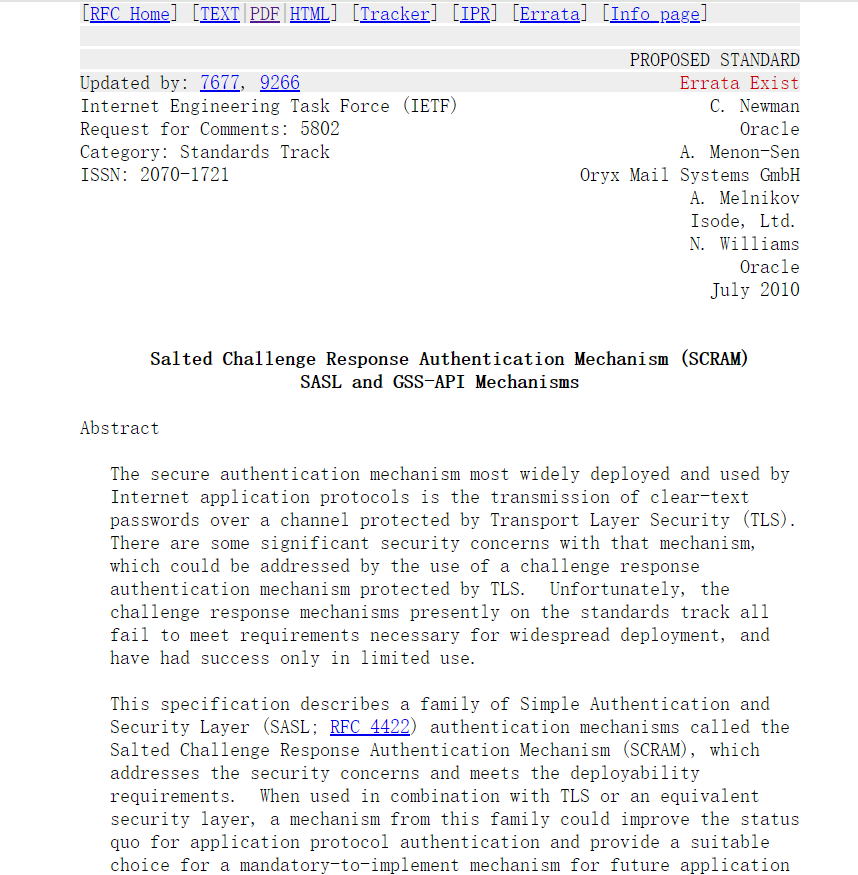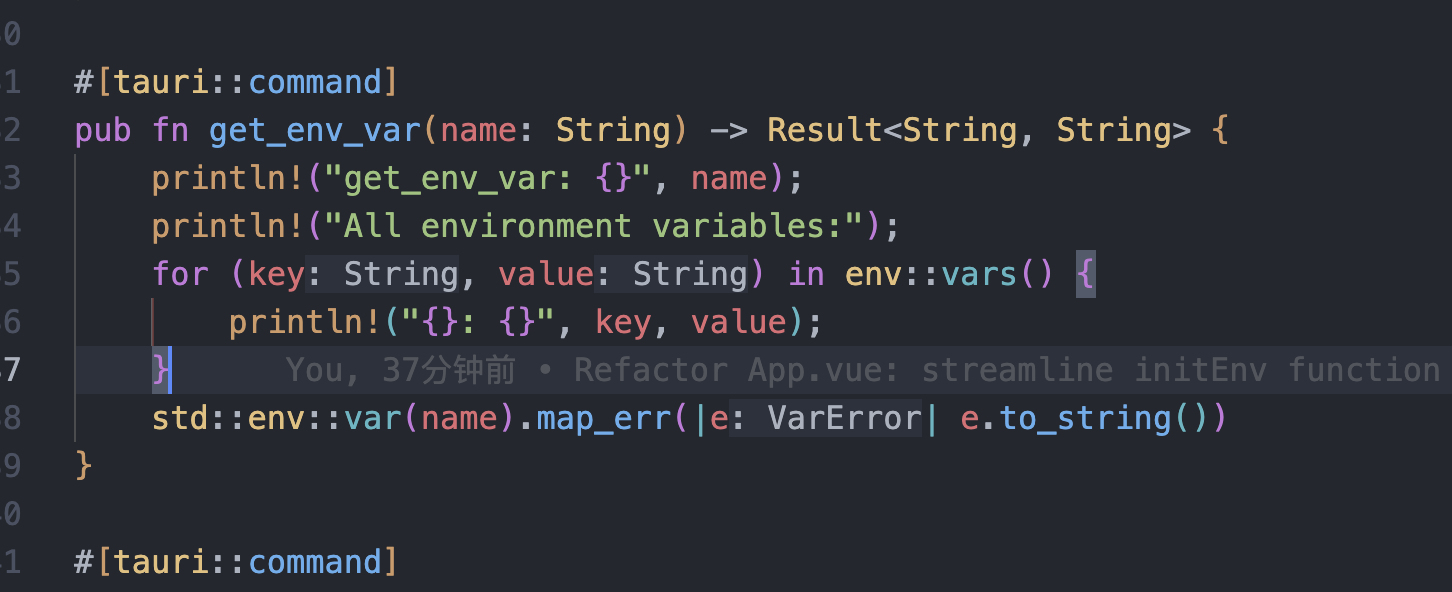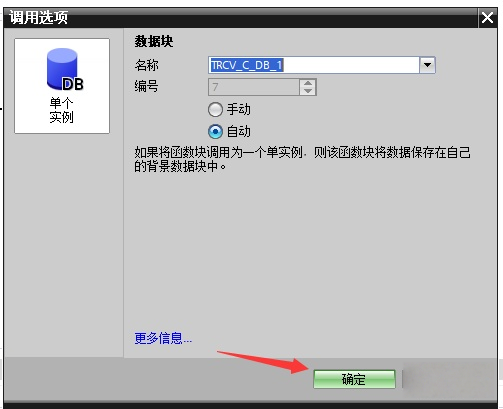PostgreSQL源码分析——口令认证
认证机制
对于数据库系统来说,其作为服务端,接受来自客户端的请求。对此,必须有对客户端的认证机制,只有通过身份认证的客户端才可以访问数据库资源,防止非法用户连接数据库。PostgreSQL支持认证方法有很多:
typedef enum UserAuth
{uaReject,uaImplicitReject, /* Not a user-visible option */uaTrust,uaIdent,uaPassword,uaMD5,uaSCRAM,uaGSS,uaSSPI,uaPAM,uaBSD,uaLDAP,uaCert,uaRADIUS,uaPeer
#define USER_AUTH_LAST uaPeer /* Must be last value of this enum */
} UserAuth;
对此,我们仅分析常用的口令认证方式。目前PostgreSQL支持MD5、SCRAM-SHA-256对密码哈希和身份验证支持,建议使用SCRAM-SHA-256,相较MD5安全性更高。不同的基于口令的认证方法的可用性取决于用户的口令在服务器上是如何被加密(或者更准确地说是哈希)的。这由设置口令时的配置参数password_encryption控制。可用值为scham-sha-256、md5。
host all all 0.0.0.0/0 scham-sha-256
口令认证并不是简单的客户端告诉服务端密码,服务端比对成功就可以了。而是要设计一个客户端和服务器协商身份验证机制,避免密码明文存储等等问题。对此,PostgreSQL引入SCRAM身份验证机制(RFC5802、RFC7677)

也就是说,后面的口令认证方法中,遵循的是如上的口令认证协议。
参考文档:53.3.1. SCRAM-SHA-256认证
源码分析
这里只分析口令认证的情况。 口令认证分为明文口令认证和加密口令认证。明文口令认证要求客户端提供一个未加密的口令进行认证,安全性较差,已经被禁止使用。加密口令认证要求客户端提供一个经过SCRAM-SHA-256加密的口令进行认证,该口令在传送过程中使用了结合salt的单向哈希加密,增强了安全性。口令都存储在pg_authid系统表中,可通过CREATE USER test WITH PASSWORD '******';等命令进行设置。
客户端
以psql客户端为例,当客户端发出连接请求后,分析口令认证的过程。
main
--> parse_psql_options(argc, argv, &options);// 连接数据库,中间会有认证这块,有不同的认证方法,这里列的是口令认证方式的流程
--> do {// 输入host、port、user、password、dbname等信息PQconnectdbParams(keywords, values, true);--> PQconnectStartParams(keywords, values, expand_dbname);--> makeEmptyPGconn();--> conninfo_array_parse(keywords, values, &conn->errorMessage, true, expand_dbname);--> fillPGconn(conn, connOptions)--> connectDBStart(conn)--> PQconnectPoll(conn) // 尝试建立TCP连接--> socket(addr_cur->ai_family, SOCK_STREAM, 0);--> connect(conn->sock, addr_cur->ai_addr, addr_cur->ai_addrlen)--> connectDBComplete(conn);// 认证这块与数据库服务端交互以及状态很多,这里没有全部列出。--> PQconnectPoll(conn);--> pqReadData(conn);--> pqsecure_read(conn, conn->inBuffer + conn->inEnd, conn->inBufSize - conn->inEnd);--> pqsecure_raw_read(conn, ptr, len);--> recv(conn->sock, ptr, len, 0);--> pg_fe_sendauth(areq, msgLength, conn);--> pg_SASL_init(conn, payloadlen)--> conn->sasl->init(conn,password,selected_mechanism);--> pg_saslprep(password, &prep_password);--> conn->sasl->exchange(conn->sasl_state, NULL, -1, &initialresponse, &initialresponselen, &done, &success);--> build_client_first_message(state);--> pg_strong_random(raw_nonce, SCRAM_RAW_NONCE_LEN)PQconnectionNeedsPassword(pset.db) // 是否需要密码,如果需要,等待用户数据密码}// 进入主循环,等待用户输入命令,执行命令
--> MainLoop(stdin); --> psql_scan_create(&psqlscan_callbacks);--> while (successResult == EXIT_SUCCESS){// 等待用户输入命令gets_interactive(get_prompt(prompt_status, cond_stack), query_buf);SendQuery(query_buf->data); // 把用户输入的SQL命令发送到数据库服务--> ExecQueryAndProcessResults(query, &elapsed_msec, &svpt_gone, false, NULL, NULL) > 0);--> PQsendQuery(pset.db, query); // 通过libpq与数据库交互--> PQgetResult(pset.db);}
服务端
服务端相关流程:
main()
--> PostmasterMain(argc, argv);--> InitProcessGlobals(); // set MyProcPid, MyStartTime[stamp], random seeds--> pg_prng_strong_seed(&pg_global_prng_state)--> srandom(pg_prng_uint32(&pg_global_prng_state));--> InitializeGUCOptions();--> ProcessConfigFile(PGC_POSTMASTER);--> ProcessConfigFileInternal(context, true, elevel);--> ParseConfigFp(fp, abs_path, depth, elevel, head_p, tail_p);--> load_hba() // 读pg_hba.conf--> parse_hba_line(tok_line, LOG) // 解析pg_hba.conf中的每条记录,解析到HbaLine的链表结构中--> load_ident()--> ServerLoop();--> BackendStartup(port);--> InitPostmasterChild();--> BackendInitialize(port);--> pq_init();--> RegisterTimeout(STARTUP_PACKET_TIMEOUT, StartupPacketTimeoutHandler);--> enable_timeout_after(STARTUP_PACKET_TIMEOUT, AuthenticationTimeout * 1000);--> ProcessStartupPacket(port, false, false); // Read a client's startup packet--> pq_startmsgread();--> pq_getbytes((char *) &len, 1)--> InitProcess();--> BackendRun(port);--> PostgresMain(port->database_name, port->user_name);--> BaseInit();// 在接收用户SQL请求前进行认证--> InitPostgres(dbname, InvalidOid, username, InvalidOid,!am_walsender, false, NULL);--> PerformAuthentication(MyProcPort);--> enable_timeout_after(STATEMENT_TIMEOUT, AuthenticationTimeout * 1000);--> ClientAuthentication(port);--> hba_getauthmethod(port);--> check_hba(port);// 根据不同的认证方法进行认证--> switch (port->hba->auth_method){ case uaTrust:status = STATUS_OK;break;case uaMD5:case uaSCRAM:// 口令认证status = CheckPWChallengeAuth(port, &logdetail);--> break;// ...}--> if (status == STATUS_OK)sendAuthRequest(port, AUTH_REQ_OK, NULL, 0);elseauth_failed(port, status, logdetail);--> disable_timeout(STATEMENT_TIMEOUT, false);--> initialize_acl();// 认证通过后才能接受用户的SQL请求--> for (;;){// ...exec_simple_query(query_string);}
每次客户端发起连接时,postgres主进程都会fork一个子进程:
static int BackendStartup(Port *port)
{// ...pid = fork_process();if (pid == 0) /* child */{free(bn);/* Detangle from postmaster */InitPostmasterChild();/* Close the postmaster's sockets */ClosePostmasterPorts(false);/* Perform additional initialization and collect startup packet */BackendInitialize(port);/** Create a per-backend PGPROC struct in shared memory. We must do* this before we can use LWLocks. In the !EXEC_BACKEND case (here)* this could be delayed a bit further, but EXEC_BACKEND needs to do* stuff with LWLocks before PostgresMain(), so we do it here as well* for symmetry.*/InitProcess(); /* And run the backend */BackendRun(port); // }
}
每个子进程在接收用户的SQL请求前,需要先进行认证。主要实现在ClientAuthentication函数中,通过认证才能继续进行下一步。
/** Client authentication starts here. If there is an error, this* function does not return and the backend process is terminated. */
void ClientAuthentication(Port *port)
{int status = STATUS_ERROR;const char *logdetail = NULL;hba_getauthmethod(port);/** This is the first point where we have access to the hba record for the* current connection, so perform any verifications based on the hba* options field that should be done *before* the authentication here. */if (port->hba->clientcert != clientCertOff){/* If we haven't loaded a root certificate store, fail */if (!secure_loaded_verify_locations())ereport(FATAL,(errcode(ERRCODE_CONFIG_FILE_ERROR),errmsg("client certificates can only be checked if a root certificate store is available")));/* If we loaded a root certificate store, and if a certificate is* present on the client, then it has been verified against our root* certificate store, and the connection would have been aborted* already if it didn't verify ok. */if (!port->peer_cert_valid)ereport(FATAL,(errcode(ERRCODE_INVALID_AUTHORIZATION_SPECIFICATION), errmsg("connection requires a valid client certificate")));}// 根据不同的认证方法,进行不同的处理switch (port->hba->auth_method){// ...case uaMD5:case uaSCRAM:status = CheckPWChallengeAuth(port, &logdetail);break;case uaPassword:status = CheckPasswordAuth(port, &logdetail);break;case uaTrust:status = STATUS_OK;break;}if ((status == STATUS_OK && port->hba->clientcert == clientCertFull)|| port->hba->auth_method == uaCert){/** Make sure we only check the certificate if we use the cert method* or verify-full option.*/
#ifdef USE_SSLstatus = CheckCertAuth(port);
#elseAssert(false);
#endif}if (ClientAuthentication_hook)(*ClientAuthentication_hook) (port, status);if (status == STATUS_OK)sendAuthRequest(port, AUTH_REQ_OK, NULL, 0);elseauth_failed(port, status, logdetail);
}
对于口令认证,具体实现为CheckPWChallengeAuth函数。
/* MD5 and SCRAM authentication. */
static int CheckPWChallengeAuth(Port *port, const char **logdetail)
{int auth_result;char *shadow_pass;PasswordType pwtype;/* First look up the user's password. */ // 查找pg_authid系统表中的用户密码shadow_pass = get_role_password(port->user_name, logdetail);if (!shadow_pass)pwtype = Password_encryption;elsepwtype = get_password_type(shadow_pass);/* If 'md5' authentication is allowed, decide whether to perform 'md5' or* 'scram-sha-256' authentication based on the type of password the user* has. If it's an MD5 hash, we must do MD5 authentication, and if it's a* SCRAM secret, we must do SCRAM authentication.** If MD5 authentication is not allowed, always use SCRAM. If the user* had an MD5 password, CheckSASLAuth() with the SCRAM mechanism will fail. */if (port->hba->auth_method == uaMD5 && pwtype == PASSWORD_TYPE_MD5)auth_result = CheckMD5Auth(port, shadow_pass, logdetail);elseauth_result = CheckSASLAuth(&pg_be_scram_mech, port, shadow_pass,logdetail);if (shadow_pass)pfree(shadow_pass);/* If get_role_password() returned error, return error, even if the authentication succeeded. */if (!shadow_pass){Assert(auth_result != STATUS_OK);return STATUS_ERROR;}if (auth_result == STATUS_OK)set_authn_id(port, port->user_name);return auth_result;
}int CheckSASLAuth(const pg_be_sasl_mech *mech, Port *port, char *shadow_pass, const char **logdetail)
{StringInfoData sasl_mechs;int mtype;StringInfoData buf;void *opaq = NULL;char *output = NULL;int outputlen = 0;const char *input;int inputlen;int result;bool initial;/** Send the SASL authentication request to user. It includes the list of* authentication mechanisms that are supported.*/initStringInfo(&sasl_mechs);mech->get_mechanisms(port, &sasl_mechs);/* Put another '\0' to mark that list is finished. */appendStringInfoChar(&sasl_mechs, '\0');sendAuthRequest(port, AUTH_REQ_SASL, sasl_mechs.data, sasl_mechs.len);pfree(sasl_mechs.data);/** Loop through SASL message exchange. This exchange can consist of* multiple messages sent in both directions. First message is always* from the client. All messages from client to server are password* packets (type 'p').*/initial = true;do{pq_startmsgread();mtype = pq_getbyte();if (mtype != 'p'){/* Only log error if client didn't disconnect. */if (mtype != EOF){ereport(ERROR,(errcode(ERRCODE_PROTOCOL_VIOLATION), errmsg("expected SASL response, got message type %d",mtype)));}elsereturn STATUS_EOF;}/* Get the actual SASL message */initStringInfo(&buf);if (pq_getmessage(&buf, PG_MAX_SASL_MESSAGE_LENGTH)){/* EOF - pq_getmessage already logged error */pfree(buf.data);return STATUS_ERROR;}elog(DEBUG4, "processing received SASL response of length %d", buf.len);/* The first SASLInitialResponse message is different from the others.* It indicates which SASL mechanism the client selected, and contains* an optional Initial Client Response payload. The subsequent* SASLResponse messages contain just the SASL payload. */if (initial){const char *selected_mech;selected_mech = pq_getmsgrawstring(&buf);/** Initialize the status tracker for message exchanges.** If the user doesn't exist, or doesn't have a valid password, or* it's expired, we still go through the motions of SASL* authentication, but tell the authentication method that the* authentication is "doomed". That is, it's going to fail, no matter what.** This is because we don't want to reveal to an attacker what* usernames are valid, nor which users have a valid password. */opaq = mech->init(port, selected_mech, shadow_pass);inputlen = pq_getmsgint(&buf, 4);if (inputlen == -1)input = NULL;elseinput = pq_getmsgbytes(&buf, inputlen);initial = false;}else{inputlen = buf.len;input = pq_getmsgbytes(&buf, buf.len);}pq_getmsgend(&buf);/* Hand the incoming message to the mechanism implementation. */result = mech->exchange(opaq, input, inputlen,&output, &outputlen,logdetail);/* input buffer no longer used */pfree(buf.data);if (output){/*PG_SASL_EXCHANGE_FAILURE with some output is forbidden by SASL.Make sure here that the mechanism used got that right. */if (result == PG_SASL_EXCHANGE_FAILURE)elog(ERROR, "output message found after SASL exchange failure");/* Negotiation generated data to be sent to the client. */elog(DEBUG4, "sending SASL challenge of length %d", outputlen);if (result == PG_SASL_EXCHANGE_SUCCESS)sendAuthRequest(port, AUTH_REQ_SASL_FIN, output, outputlen);elsesendAuthRequest(port, AUTH_REQ_SASL_CONT, output, outputlen);pfree(output);}} while (result == PG_SASL_EXCHANGE_CONTINUE);/* Oops, Something bad happened */if (result != PG_SASL_EXCHANGE_SUCCESS){return STATUS_ERROR;}return STATUS_OK;
}相关文章:

PostgreSQL源码分析——口令认证
认证机制 对于数据库系统来说,其作为服务端,接受来自客户端的请求。对此,必须有对客户端的认证机制,只有通过身份认证的客户端才可以访问数据库资源,防止非法用户连接数据库。PostgreSQL支持认证方法有很多࿱…...
)
Stability-AI(图片生成视频)
1.项目地址 GitHub - Stability-AI/generative-models: Generative Models by Stability AI 2.模型地址 魔搭社区 3.克隆项目后,按照教程安装 conda create --name Stability python3.10 conda activate Stability pip3 install -r requirements/pt2.txt py…...

Linux机器通过Docker-Compose安装Jenkins发送Allure报告
目录 一、安装Docker 二、安装Docker Compose 三、准备测试用例 四、配置docker-compose.yml 五、启动Jenkins 六、配置Jenkins和Allure插件 七、创建含pytest的Jenkins任务 八、项目结果通知 1.通过企业微信通知 2.通过邮件通知 九、配置域名DNS解析 最近小编接到一…...

基于Gunicorn+Flask+Docker模型高并发部署
关于猫头虎 大家好,我是猫头虎,别名猫头虎博主,擅长的技术领域包括云原生、前端、后端、运维和AI。我的博客主要分享技术教程、bug解决思路、开发工具教程、前沿科技资讯、产品评测图文、产品使用体验图文、产品优点推广文稿、产品横测对比文…...
解析--基于TypeResolver实现将类型变量替换为实际类型)
java:类型变量(TypeVariable)解析--基于TypeResolver实现将类型变量替换为实际类型
上一篇博客《java:类型变量(TypeVariable)解析–获取泛型类(Generic Class)所有的类型变量(TypeVariable)的实际映射类型》中介绍如何如何正确解析泛型类的类型变量(TypeVariable),获取对应的实际类型。 有了类型变量(TypeVariable)–实际类型的映射,我们…...

ru俄罗斯域名如何申请SSL证书?
我们日常看到的都是com这种国际域名比较普遍,尤其是主流网站,主要原因考虑的其通用性,那么对于地方性的域名大家很少看到,比如俄罗斯国家域名.ru大家还是有些陌生的,但要说中国.CN域名那你就很熟悉了。 有用户在申请过…...

python实现购物车的功能
模拟购物车,准备一个列表 goodList [{name:笔记本电脑,price:8000}, {name:鼠标, price:100}] 5个函数 1.加入购物车 2.收藏商品 3.去结算 4.删除购物车商品 5.清空购物车 购物车 cartList [] 收藏列表 collectSet {笔记本电脑,鼠标} 数据示例 去结算计算出总价…...

日元预计明年开始上涨
被称为“日元先生”的前大藏省(现财务省)财务官榊原英资预测,美元兑日元汇率将在今年底或2025年初逐步升至130。他认为,通缩时代已经过去,通货膨胀即将来临。 《日本经济新闻》6月5日报道,日本财务省于5月3…...

8、PHP 实现二进制中1的个数、数值的整数次方
题目: 二进制中1的个数 描述: 输入一个整数,输出该数二进制表示中1的个数。其中负数用补码表示。 <?phpfunction NumberOf1($n) {$count 0;if($n < 0){$n $n & 0x7FFFFFFF;$count;}while($n ! 0){$count;$n $n & ($n - 1…...

linux git凭证管理
linux git 凭证管理 解决命令行git登录github的问题,支持两步验证 同样适用于Azure Devops, Bitbucket 官网: https://github.com/git-ecosystem/git-credential-manager https://github.com/git-ecosystem/git-credential-manager/blob/release/docs/…...

WIC 图像处理初体验——读取像素的值
先放上运行结果: 可以发现红绿蓝是从后往前的。 必须以C方式编译代码! #define _CRT_SECURE_NO_WARNINGS #include <stdio.h> #include <wincodec.h>int main(void) {CoInitialize(nullptr);IWICImagingFactory* fac;CoCreateInstance(CLS…...
,并获取message里面的内容)
使用Server-Sent Events (SSE),并获取message里面的内容
什么是Server-Sent Events (SSE)? Server-Sent Events (SSE)是一种服务器推送技术,允许服务器向客户端(浏览器)发送实时消息。与WebSocket不同,SSE是单向通信,只能从服务器到客户端。SSE在HTML5中作为标准实现&#…...

LabVIEW项目管理中如何平衡成本、时间和质量
在LabVIEW项目管理中,平衡成本、时间和质量是实现项目成功的关键。通过制定详细的项目计划、合理分配资源、严格控制进度、进行质量保证和灵活应对变化,项目管理者可以有效地协调这三者的关系,确保项目按时、按质、按预算完成。 1. 制定详细…...

如何检查 Kubernetes 网络配置
简介 Kubernetes 是一个容器编排系统,可以管理集群中的容器化应用程序。在集群中保持所有容器之间的网络连接需要一些高级网络技术。在本文中,我们将简要介绍一些工具和技术,用于检查这种网络设置。 如果您正在调试连接问题,调查…...

如何将网站封装成App:小猪APP分发助你实现
你有没有想过,将你的网站变成一个App会是什么样子?想象一下,用户只需点击一下图标,就能立刻访问你的内容,而不是在浏览器中输入网址。这不仅提升了用户体验,还能增加用户粘性。这一切都可以通过将网站封装成…...

探索C嘎嘎的奇妙世界:第十六关---STL(vector的练习)
1.只出现一次的数字 我们可以使用异或运算来解决这个问题: 异或运算有一个重要的性质:两个相同的数进行异或运算结果为 0,任何数与 0 异或结果为其本身。对于数组中的元素,依次进行异或运算,出现两次的元素异…...

最新扣子(Coze)实战案例:扣子卡片的制作及使用,完全免费教程
🧙♂️ 大家好,我是斜杠君,手把手教你搭建扣子AI应用。 📜 本教程是《AI应用开发系列教程之扣子(Coze)实战教程》,完全免费学习。 👀 关注斜杠君,可获取完整版教程。👍Ἷ…...

Node-red win11安装
文章目录 前言一、安装node.js和npm二、安装Node-red三、 运行Node-red 前言 Node-RED 是一种编程工具,用于以新颖有趣的方式将硬件设备、API 和在线服务连接在一起。 它提供了一个基于浏览器的编辑器,只需单击一下即可将调色板中的各种节点轻松连接在…...

永久更改R包的安装目录
要永久更改 R 包的安装目录,可以通过设置 R 配置文件来实现。以下是步骤说明: 1. 查找和修改 R 配置文件 R 有几个配置文件用于保存用户和系统的设置: 用户级配置文件:通常位于 ~/.Rprofile系统级配置文件:通常位于…...
)
Webrtc支持FFMPEG硬解码之NVIDA(二)
一、前言 此系列文章分分为三篇, Webrtc支持FFMPEG硬解码之Intel(一)-CSDN博客 Webrtc支持FFMPEG硬解码之NVIDA(二)-CSDN博客 Webrtc支持FFMPEG硬解码之解码实现-CSDN博客 AMD硬解目前还没找到可用解码器,欢迎留言交流 二、环境 Windows平台 VS2019 Cmake 三、下…...

智慧医疗能源事业线深度画像分析(上)
引言 医疗行业作为现代社会的关键基础设施,其能源消耗与环境影响正日益受到关注。随着全球"双碳"目标的推进和可持续发展理念的深入,智慧医疗能源事业线应运而生,致力于通过创新技术与管理方案,重构医疗领域的能源使用模式。这一事业线融合了能源管理、可持续发…...

Java求职者面试指南:Spring、Spring Boot、MyBatis框架与计算机基础问题解析
Java求职者面试指南:Spring、Spring Boot、MyBatis框架与计算机基础问题解析 一、第一轮提问(基础概念问题) 1. 请解释Spring框架的核心容器是什么?它在Spring中起到什么作用? Spring框架的核心容器是IoC容器&#…...

回溯算法学习
一、电话号码的字母组合 import java.util.ArrayList; import java.util.List;import javax.management.loading.PrivateClassLoader;public class letterCombinations {private static final String[] KEYPAD {"", //0"", //1"abc", //2"…...

Selenium常用函数介绍
目录 一,元素定位 1.1 cssSeector 1.2 xpath 二,操作测试对象 三,窗口 3.1 案例 3.2 窗口切换 3.3 窗口大小 3.4 屏幕截图 3.5 关闭窗口 四,弹窗 五,等待 六,导航 七,文件上传 …...

TSN交换机正在重构工业网络,PROFINET和EtherCAT会被取代吗?
在工业自动化持续演进的今天,通信网络的角色正变得愈发关键。 2025年6月6日,为期三天的华南国际工业博览会在深圳国际会展中心(宝安)圆满落幕。作为国内工业通信领域的技术型企业,光路科技(Fiberroad&…...

tauri项目,如何在rust端读取电脑环境变量
如果想在前端通过调用来获取环境变量的值,可以通过标准的依赖: std::env::var(name).ok() 想在前端通过调用来获取,可以写一个command函数: #[tauri::command] pub fn get_env_var(name: String) -> Result<String, Stri…...

【C++】纯虚函数类外可以写实现吗?
1. 答案 先说答案,可以。 2.代码测试 .h头文件 #include <iostream> #include <string>// 抽象基类 class AbstractBase { public:AbstractBase() default;virtual ~AbstractBase() default; // 默认析构函数public:virtual int PureVirtualFunct…...

协议转换利器,profinet转ethercat网关的两大派系,各有千秋
随着工业以太网的发展,其高效、便捷、协议开放、易于冗余等诸多优点,被越来越多的工业现场所采用。西门子SIMATIC S7-1200/1500系列PLC集成有Profinet接口,具有实时性、开放性,使用TCP/IP和IT标准,符合基于工业以太网的…...

WEB3全栈开发——面试专业技能点P7前端与链上集成
一、Next.js技术栈 ✅ 概念介绍 Next.js 是一个基于 React 的 服务端渲染(SSR)与静态网站生成(SSG) 框架,由 Vercel 开发。它简化了构建生产级 React 应用的过程,并内置了很多特性: ✅ 文件系…...

DeepSeek越强,Kimi越慌?
被DeepSeek吊打的Kimi,还有多少人在用? 去年,月之暗面创始人杨植麟别提有多风光了。90后清华学霸,国产大模型六小虎之一,手握十几亿美金的融资。旗下的AI助手Kimi烧钱如流水,单月光是投流就花费2个亿。 疯…...
